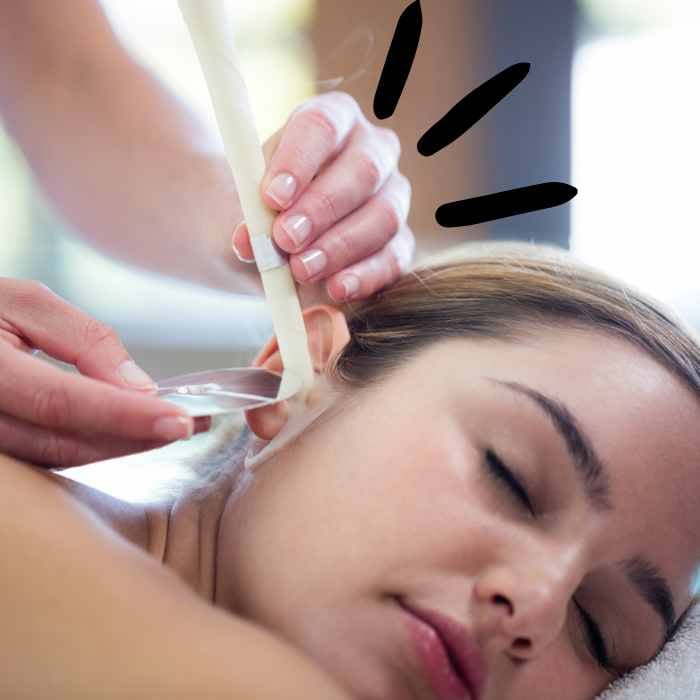Key Takeaways:
- Ear candling has a long history, but unfortunately research does not support its efficacy in removing earwax.
- Burns to the eardrum are one potentially negative consequence from ear candling.
- Fortunately, the ear is self-cleaning for most of us and doesn't require extra help. To help the ear in this process, try some mineral oil and warm water.
- If you're concerned about earwax impaction, make an appointment with an ENT or audiologist.

Ear candling is a treatment that has been around for thousands of years and dates as far back as 2500 BC. Some people claim to use it to treat earaches, sinus problems, and even hearing loss.
As an audiologist, patients often ask me about ear hygiene and whether methods like ear candling can actually help keep the ears clean. With so many alternative health treatments available right now, there is much to consider before proceeding. Read on, and I’ll break down what ear candling is, how it works, marketing claims, and if it’s really effective and safe.
What is ear candling?
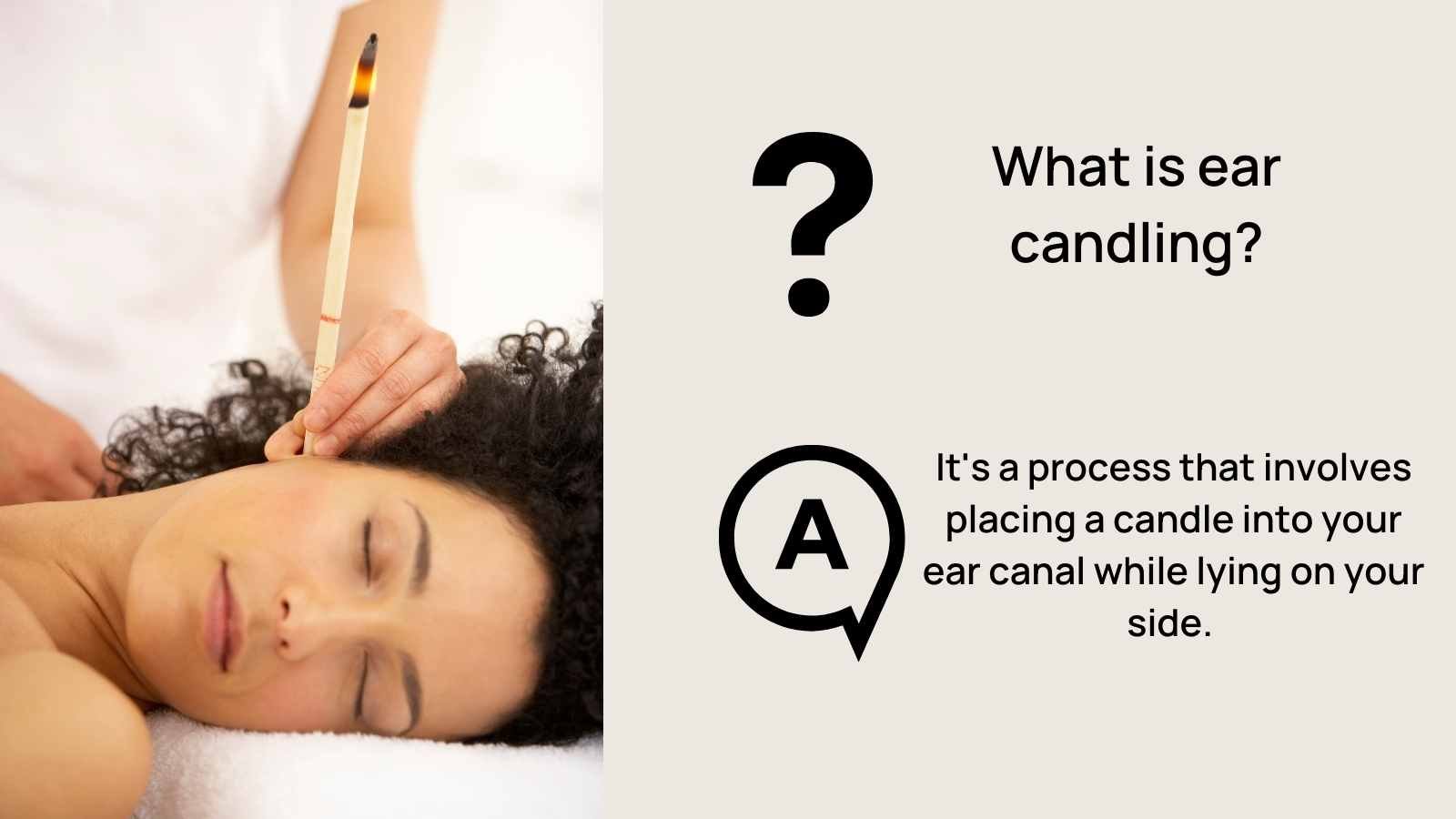
Ear candling is a process that involves placing a candle into your ear canal while lying on your side. First, the candle is placed over or around foil or paper to catch dripping wax. Then, the candle is lit, and the burnt pieces are trimmed away as the material burns down. The theory is that lighting the candle creates a vacuum effect that draws out dirt and wax build-up from the ear canal. People sometimes go so far as to claim that this process also helps to improve hearing, balance, and overall well-being. But is that really true?
Is it effective?
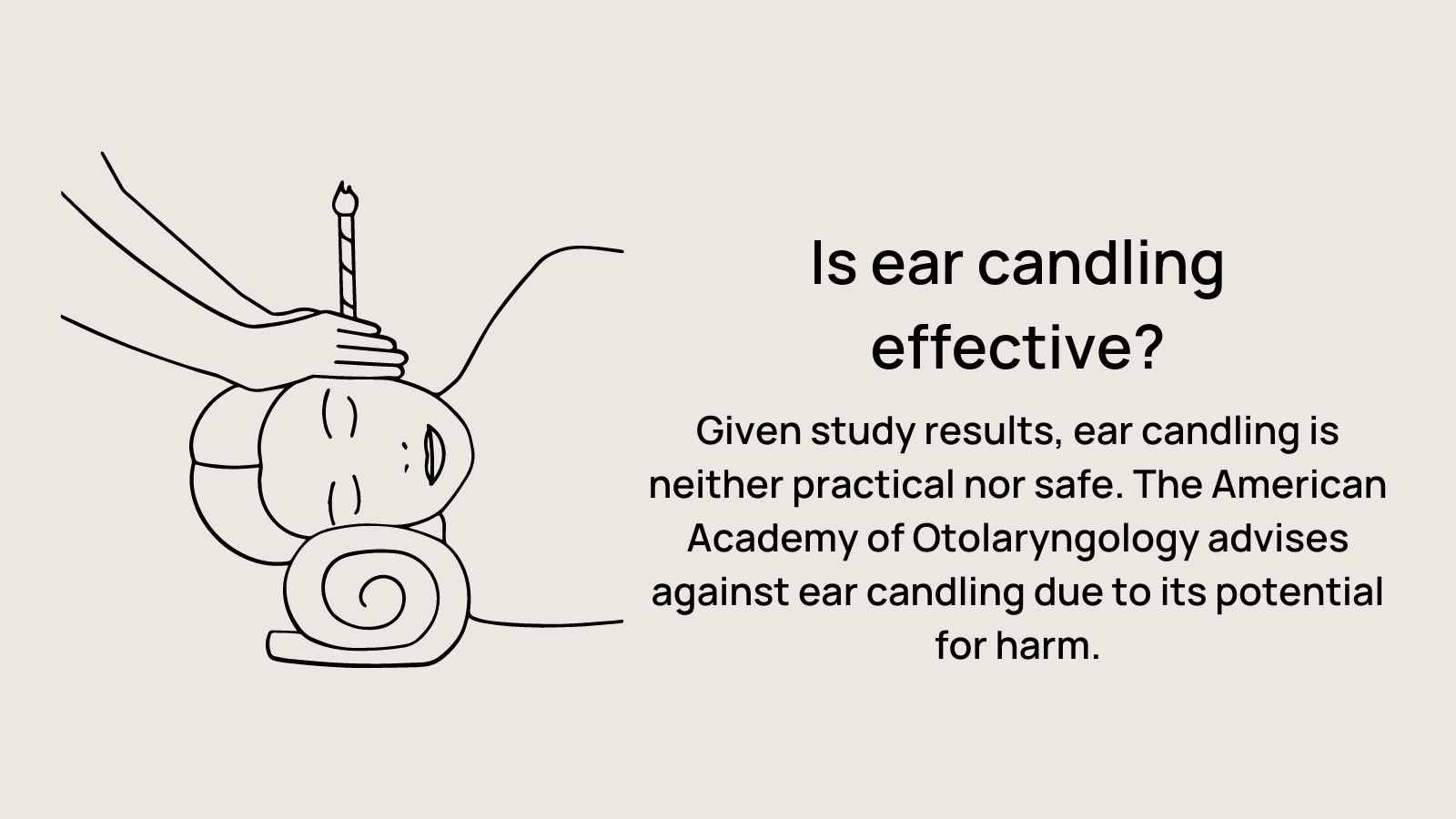
Let's talk about effectiveness in terms of ear wax removal. Are ear candles effective at removing ear wax? One study conducted by several physicians in 1996 showed that ear candles did not remove any cerumen and resulted in injury in many cases (21 out of 120 cases). Additionally, using the ear candles did not create any negative pressure in the ear. However, some individuals in the study had deposits of candle wax in the ear after the procedure. Given these results, ear candling is neither practical nor safe.
Does ear candling help with any other ear conditions?
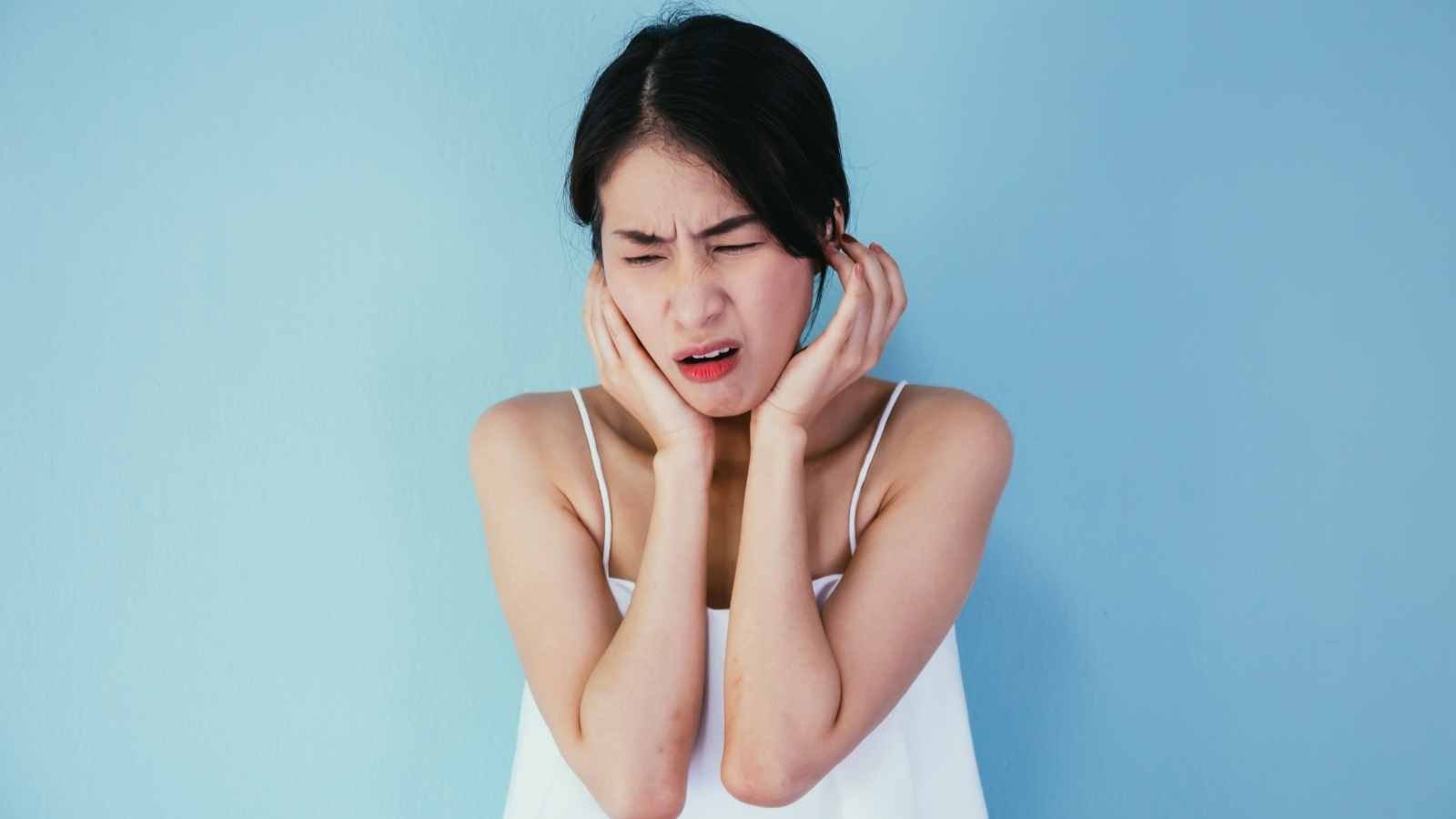
No, ear candling does not help with ear fullness, infections, vertigo, tinnitus, or other ear conditions. The American Academy of Otolaryngology advises against ear candling due to its potential for harm. Conditions that affect dizziness, imbalance, or ear infections in the middle ear space are best managed by an ENT and are not affected by the ear candle. In addition, as the middle and inner ear are located behind the eardrum, the ear candle does not impact this part of the ear.
Is it dangerous outside of spilling hot wax?
Outside of spilling hot wax in your ear canal (which can occur during the procedure), ear candling has a few other risks. The skin in the ear canal is quite sensitive. The outer two thirds of the ear canal is cushioned by cartilage below the skin, but the skin over the ear canal closest to the eardrum covers the bone directly and is extra delicate. Hot wax can cause burns on delicate skin. We've all experienced that when accidentally touching a hot burner or stove and how uncomfortable it can be on your hand or finger. Now imagine having a burn on the delicate skin of the ear canal. Ouch!
If the wax drips directly on the eardrum, burns can result in perforation of the eardrum or other unpleasant side effects. Therefore, it's essential to proceed cautiously and consider whether ear candling is in your best interest.
What about the remnants on the candle? Isn't that ear wax?
People sometimes claim that the substance left on the inside of the ear candle at the end is debris removed from the ear. However, material analyzed in the 1996 study showed no ear wax in the candle stubs. Instead, it is a mixture of candle wax and material from the wick.
Alternatives To Ear Candling
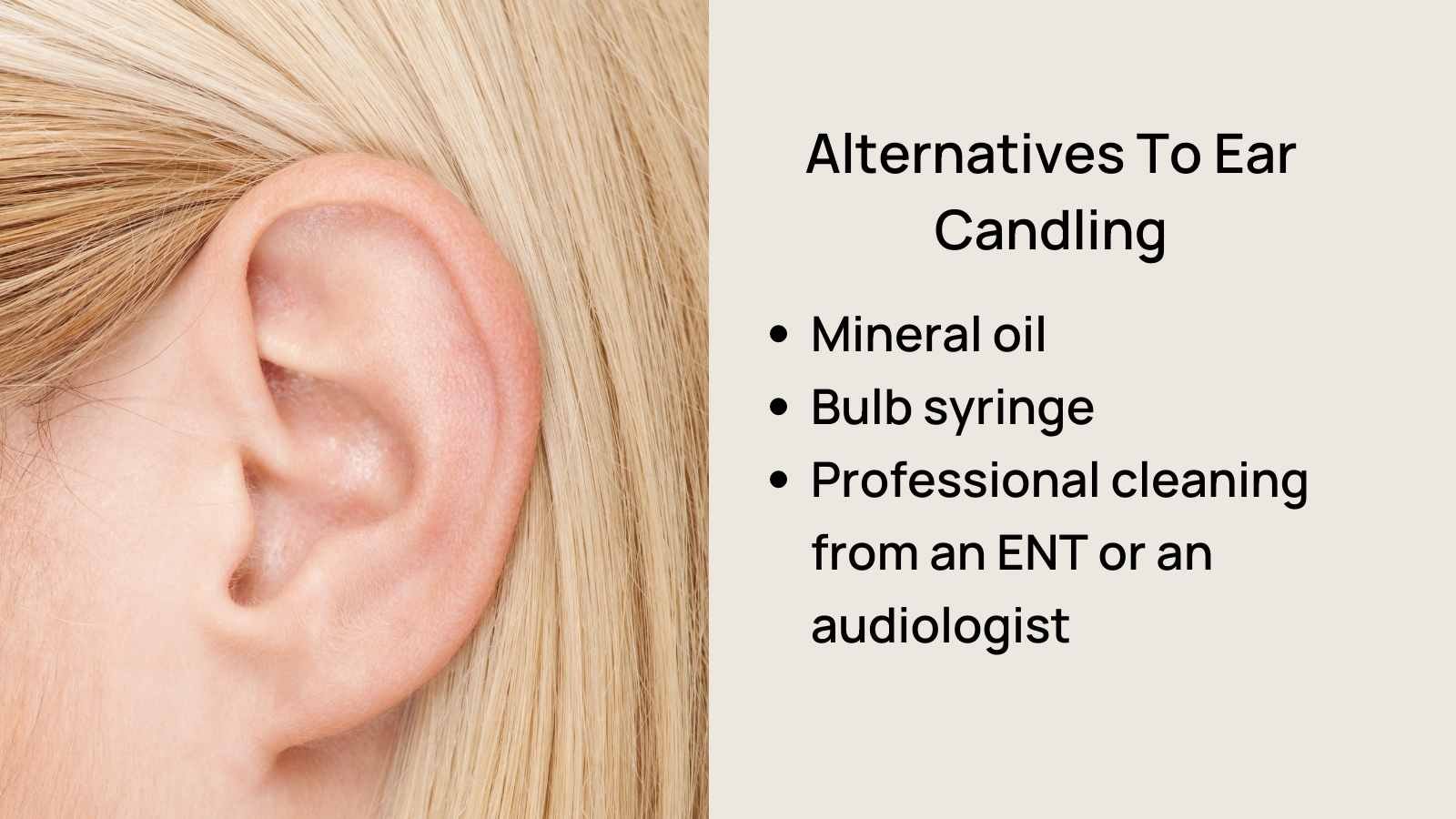
If you're looking for ways to clean the ear, plenty of safer and more effective methods exist. As an audiologist, I'm often asked about the best methods to clean ears or remove earwax. For most people, there is little that the ear needs as it is generally self-cleaning. However, for some patients the ear is not as effective at self-cleaning due to the ear canal's size and shape (e.g., very narrow or curvy ear canals), surgical changes in the ear canal, or other reasons. In these cases, a professional cleaning from an ENT and audiologist at regular intervals can help to keep the ears free, and clear of wax build up.
Here are a few tips that can help assist the ear in its natural cleaning process:
Use Mineral Oil
Several drops of mineral oil in the ear help to soften any wax. Tilt your head to the side, and use an eyedropper to place a few drops in the ear. After a few minutes, gently rinse the ear with warm water in the shower.
An Audiologist’s Note: Anyone with an active eardrum perforation, infection, drainage, or recent ear surgery should not put mineral oil in the ear and instead consult their physician regarding ear cleaning.
Bulb Syringe
Another option is to use a syringe with water to flush the ear gently. The key is to use water that is approximately body temperature. If the temperature is warmer or cooler than body temperature, it can cause a sensation of vertigo. Keep in mind—as noted above—anyone with active eardrum perforation or infection should avoid using this method.
Conclusion
In conclusion, the evidence is clear: ear candling is neither practical nor safe and has been shown to cause injury in some cases. If you're looking for ways to clean your ears or remove earwax, there are other safer and more effective methods to clean the ears. Aside from being ineffective at removing ear wax, avoid ear candling to prevent your ears from injury.



